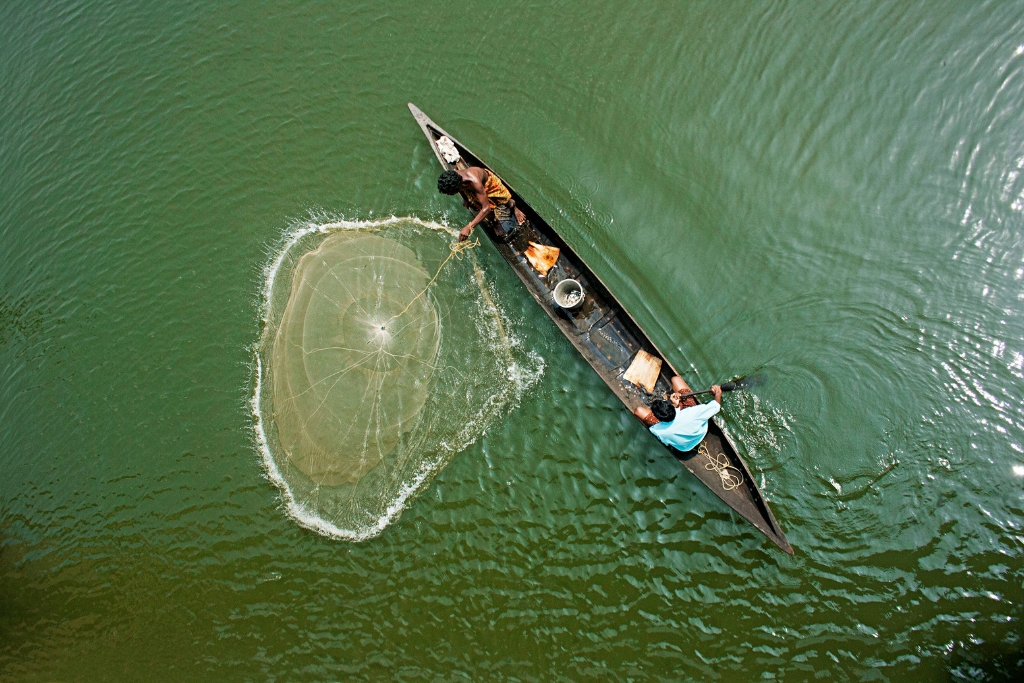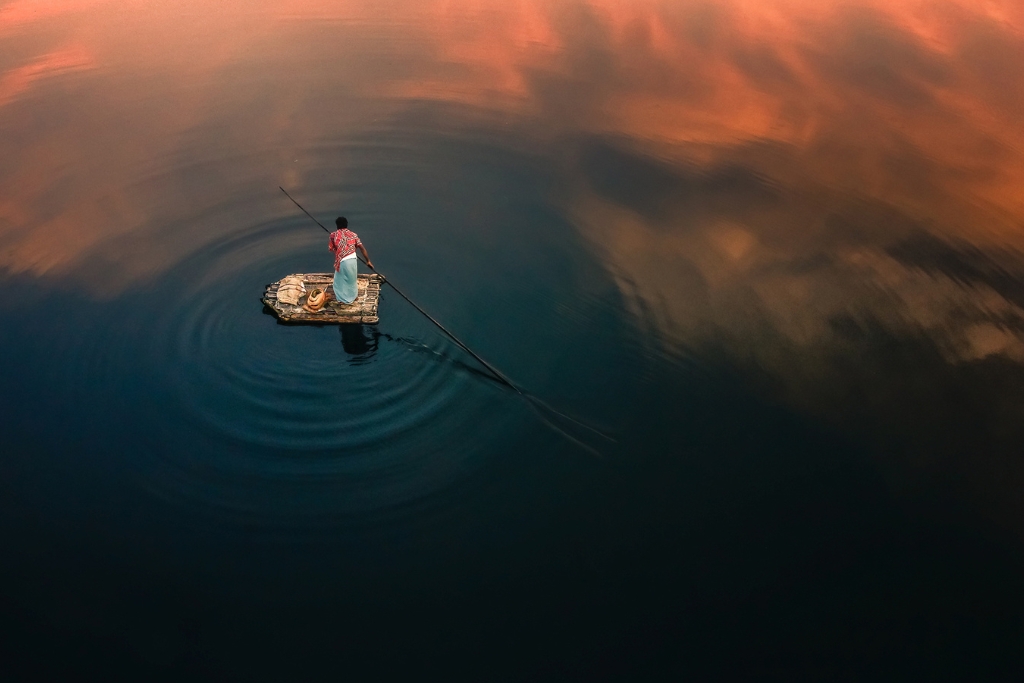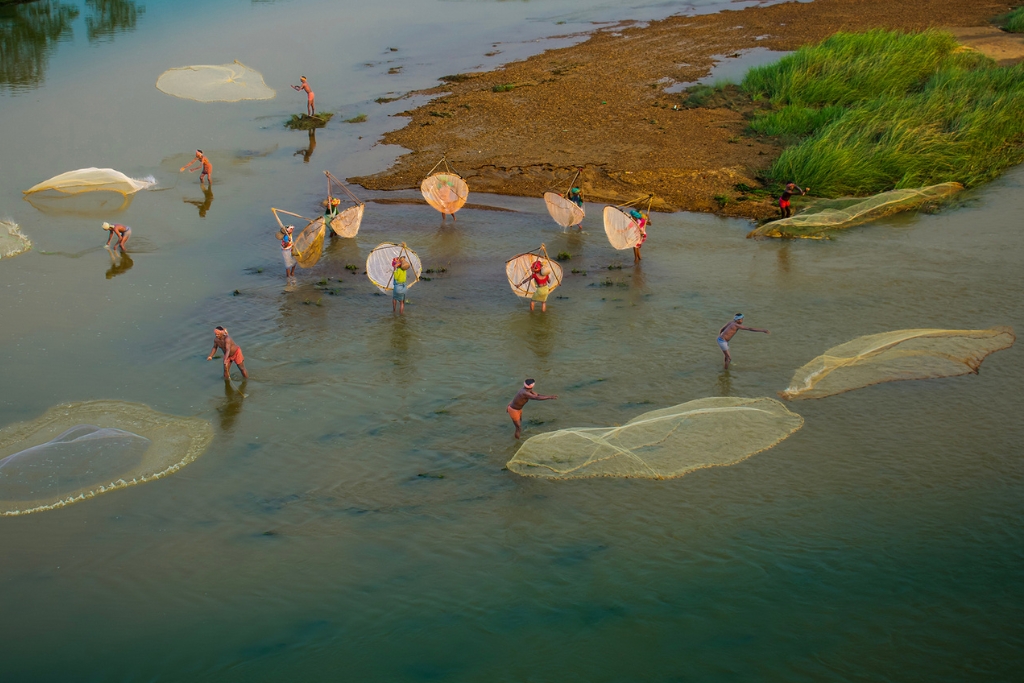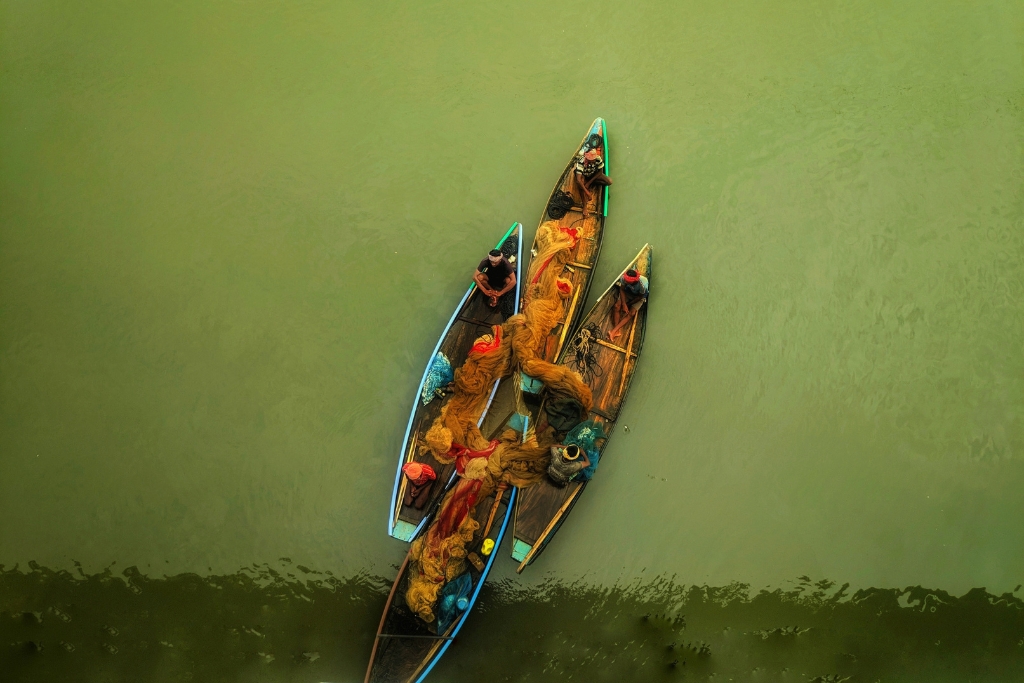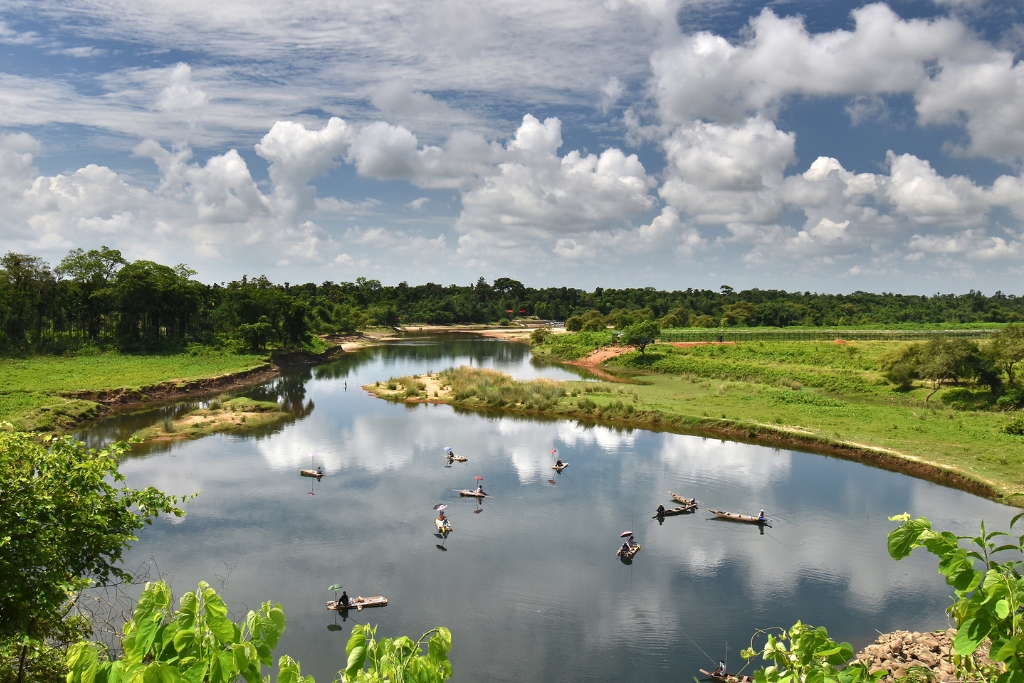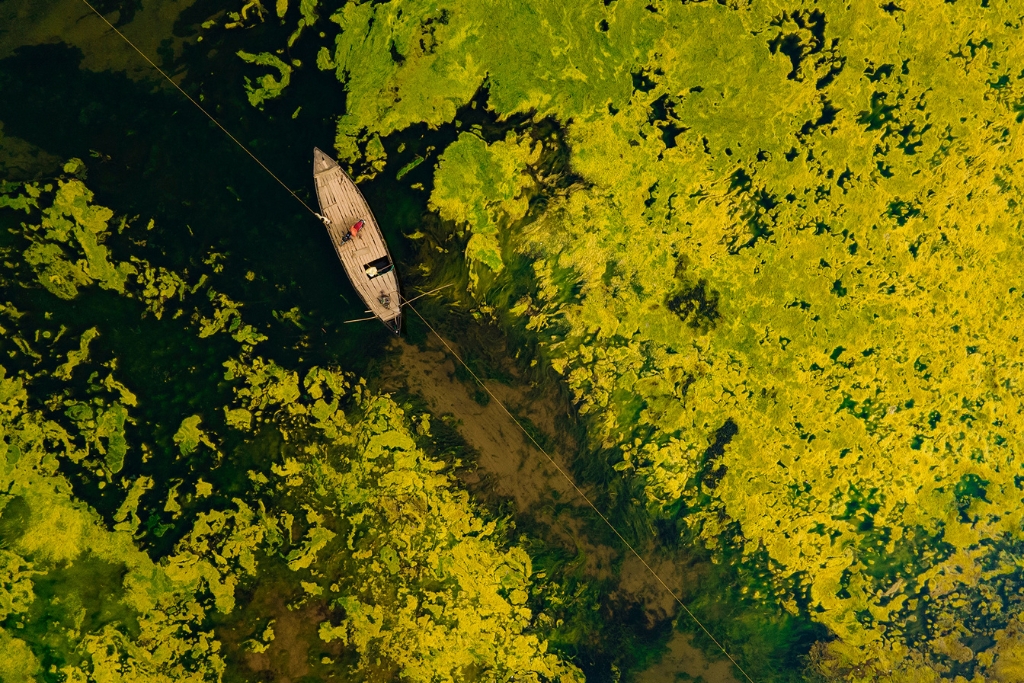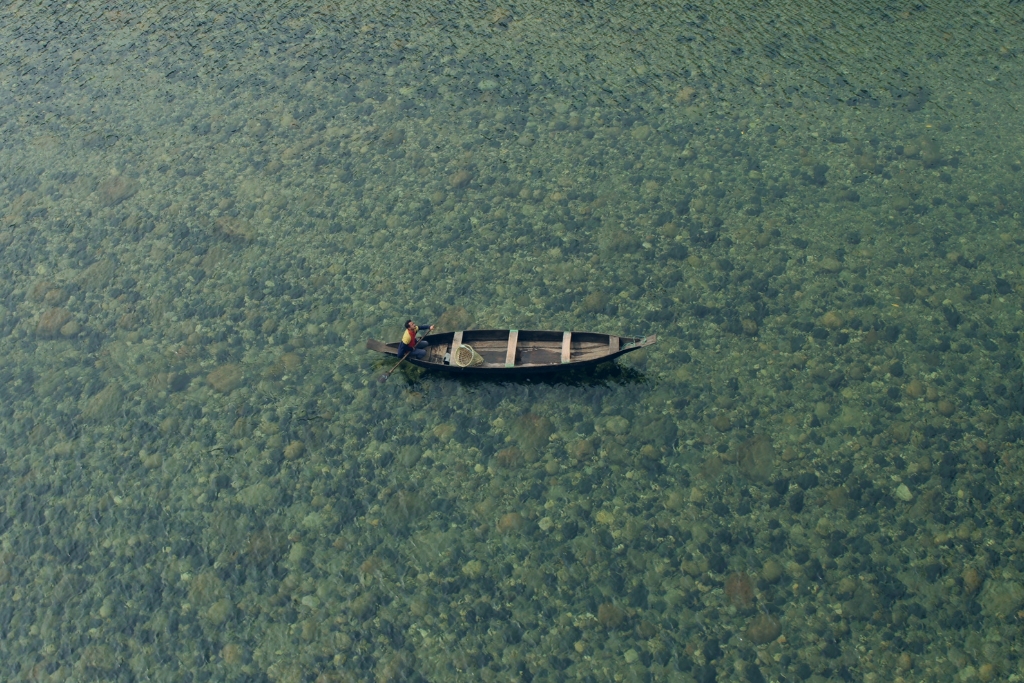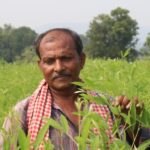A fisherman casts his net in Kerala. The traditional boat seen in this image is a dugout canoe. Dugout canoes are made by hollowing out a single tree. (Photo by Anindya Phani)
A man makes his way across a water body on his bamboo raft near Maynaguri town in West Bengal. Bamboo rafts like these serve as a lifeline for a state like Bengal where rural communities need to travel distances that may prove expensive and cumbersome by roadways. (Photo by Koushik Mohanta)
In West Bengal’s Paschim Medinipur men and women are fishing using the traditional craft called ‘polo’ which is made using large nets and conical bamboo fish traps. In this way, rural communities in Bengal come together to catch fish for themselves, and others, to earn their daily wages. (Photo by Debanjan Das)
Fishermen wait in their canoes with their nets before beginning a catch in Ganjam, Odisha. Odisha is one of India’s major fishing states with a coastline of 480 kms. (Photo by Satya Sainath)
In a remote village of Meghalaya, villagers catch fish collectively in small canoes and rafts. Fishing on a small scale provides enough fish for daily consumption. (Photo by Puranjit Gangopadhyay)
A man ferries his motorcycle on a traditional boat through the waterways in Pashchim Medinipur, West Bengal. This region is extremely flood-prone and intersected by various waterbodies that are subject to tidal influences. (Photo by Iitan Das)
In the West Jaintia Hills, Meghalaya, a boatman can be seen rowing on the crystal clear waters of the Umngot river. Umngot is known as India’s cleanest river and makes for a great tourist attraction for water activities. (Photo by Rappadi Karthik)
A fisherman casts his net for a catch in the river near Rampurhat, West Bengal. Water bodies in Bengal include rivers, ponds and the sea, making it a diverse state for fish varieties. Fish forms an important part of the Bengali diet. (Photo by Enamul Kabir)
The lead image shows a fisherman casting his net in the South 24 Paraganas district of West Bengal. (Photo by Anindya Phani)

